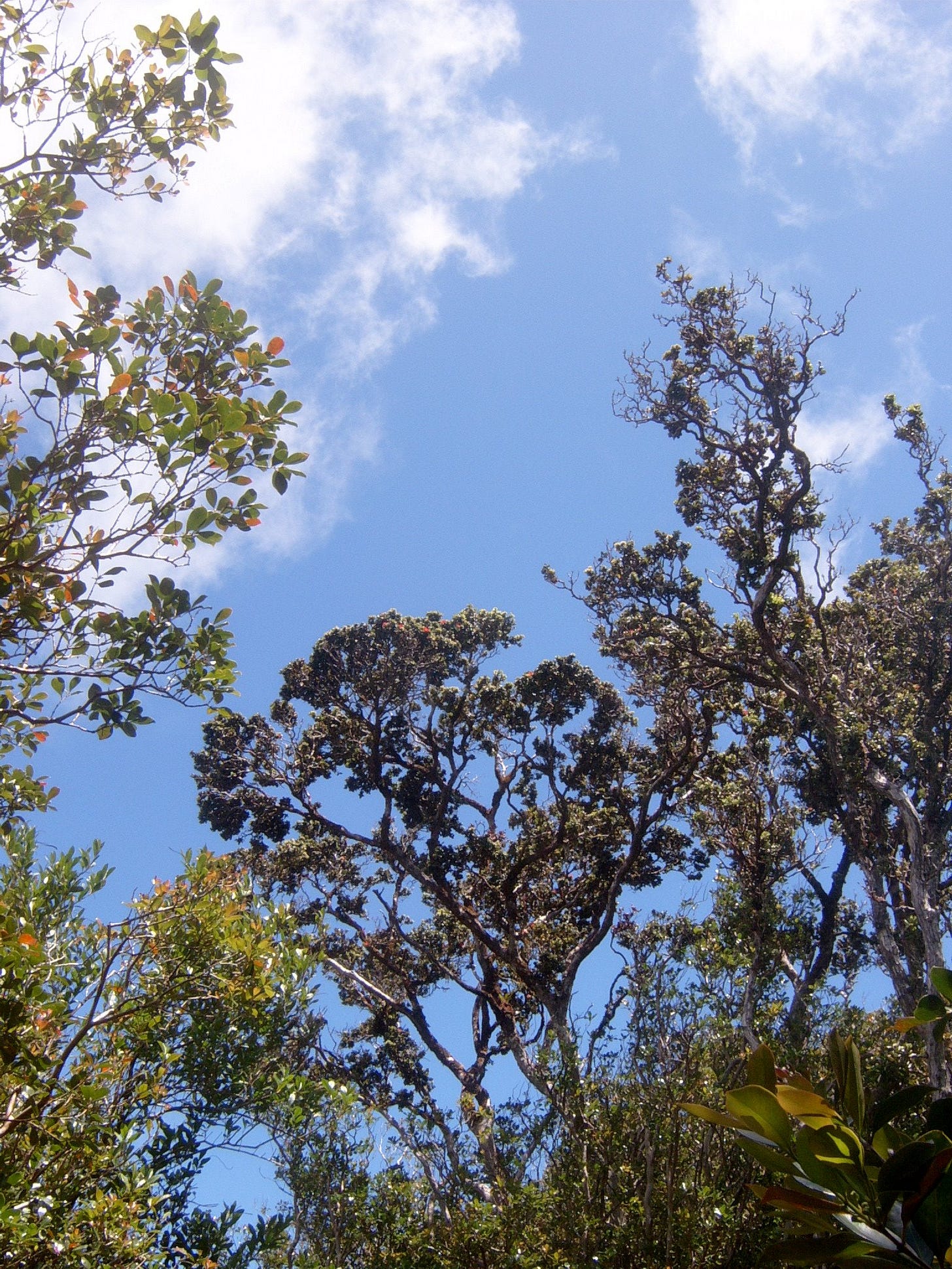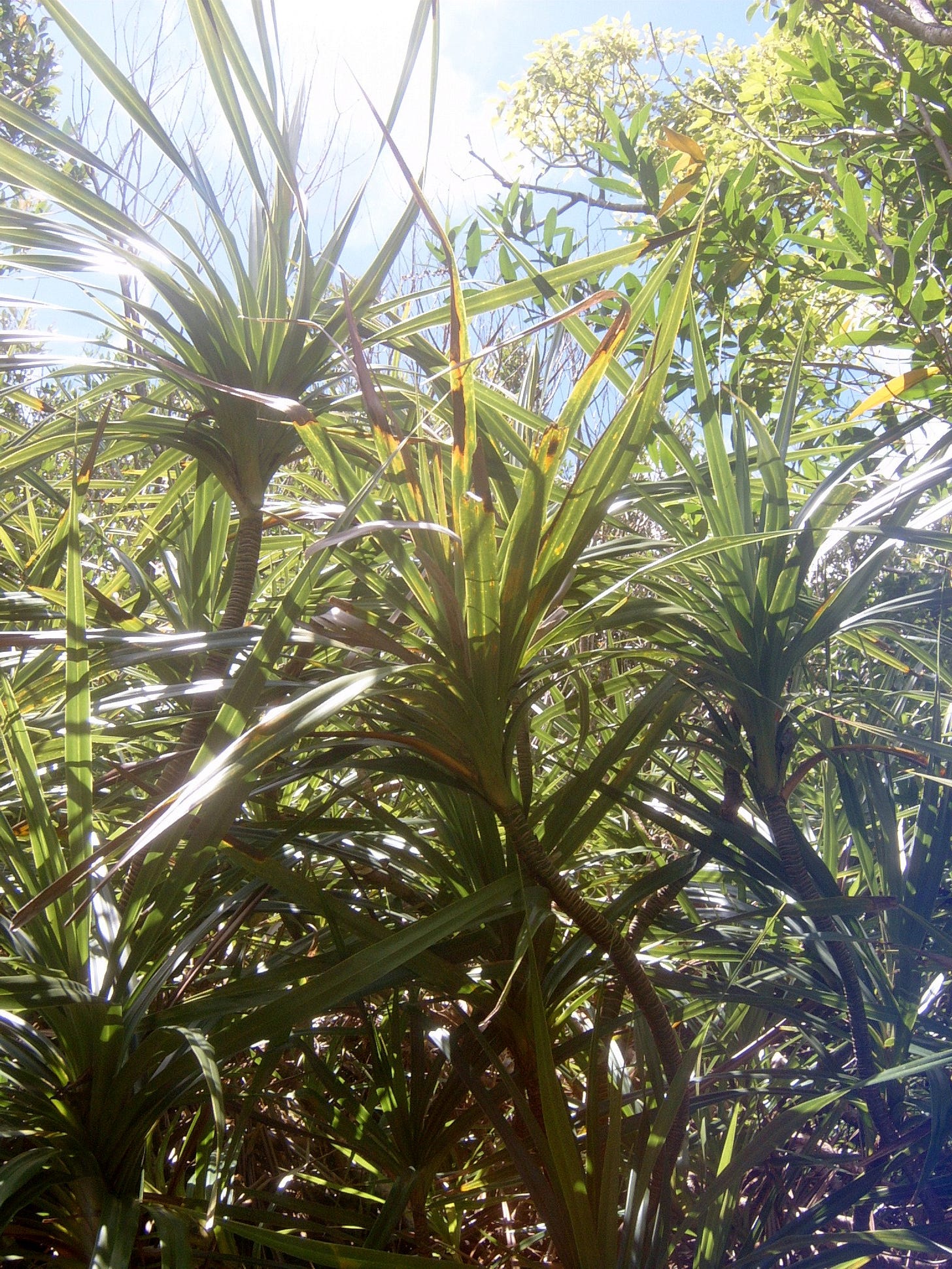Although many people consider Hawai’i a desirable holiday destination, it always seemed like a nightmare to me. I’d seen pictures of Honolulu, with high-rise buildings right on the beach front, and thought that was it. I imagined a place epitomising the excesses of over-tourism, crawling with people who’d packed cameras but not common sense, stuffed with tacky souvenir shops and with the original attractions long since obliterated.
My negative impression was reinforced by what I knew from my work on invasive species. Hawai’i is notorious among people who work in this field, because it has one of the worst problems in the world. Flora and fauna from around the globe have run rampant in Hawai’i’s fields and mountains. There are even a few New Zealand species which cause problems there, including mānuka and flax/ harakeke.
It gets worse. As you might expect for such an isolated group of islands, Hawai’i once had a lot of species which were found nowhere else. Exactly how many unique bird species there were is uncertain, but it was over 100, and perhaps over 140. Dozens, though, have become extinct. Last year, eight Hawai’ian species were removed from the US Endangered Species Act because they were confirmed to be extinct. A further ten species haven’t been seen in decades. As few as 32 species may be left.
And that is only the birds. Hawai’i once had the most extraordinary diversity of snails, perhaps up to 750 species. They occupy a special place in the indigenous culture, appearing in numerous sayings and songs. Now, though, up to 90% of the species may have been lost. While plants tend to cross the line from rarity to extinction more slowly than animals, Hawai’i has also lost more than 10% of its unique plants.
Unseen by almost all tourists, Hawai’i is suffering from a biological crisis which is unparalleled. To my knowledge, nowhere else has lost such a large proportion of unique species – not New Zealand, not Madagascar, not Mauritius. But it does make it a fascinating, if troubling, place for a biologist to visit.
When I visited Hawai’i in 2007, I was there to learn more about this crisis, in particular some of the invasive species which were causing so many problems. I met with a range of scientists, government officials and conservation workers on three of the islands, O’ahu, Maui and Hawai’i (which is informally known as the big island). They were generous with their time and knowledge, and I was able to see and understand some of what they were dealing with.
One of the first things I learned, though, was a little of the local language. To do that, I needed to know how to use a glottal stop, because every one of the Hawai’ian islands, apart from Maui, has one in the name. We use glottal stops in English, but I’ll explain them because most of us get by without knowing what they actually are. If you are a native English speaker, try saying ‘uh-oh’. Did you feel a slight catch in your throat as you started each syllable? That’s a glottal stop.
In standard English, we only use glottal stops when we start speaking, and then only with certain sounds. They do appear in certain dialects, for example ‘butter’ in the Cockney dialect, but mostly we are unaware of them. We certainly don’t write them down. But in some languages, including Hawai’ian (known as ʻŌlelo Hawaiʻi), glottals are crucial. Pau is a commonly-used word, even among English speakers in Hawai’i, which means finished. Pa’u, however, means soot.
I also learned about the Hawai’ian sense of direction. I was told that people in Hawai’i don’t talk about north and south. Often, they don’t even say whether to turn right or left when giving directions. Instead, they’ll refer to makai, towards the sea, or mauka, inland (literally ‘the mountain’ since the middle of every Hawai’ian island is a volcano).
I recognised the word mauka, because in most Māori dialects, mountain is maunga. But the ng and k sounds are very close, and in some parts of the South Island of New Zealand, mountain is mauka. There were other similarities too. Hawai’i has a small tree named hau, which is related to a tree called whau in New Zealand. They also have a plant known as ‘ie’ie, which is closely related to a New Zealand plant called kie kie.
I was particularly excited when I saw the ‘ie’ie, a scrambling plant which can form dense patches in forest gaps. I was walking in a patch of forest on O’ahu, not far from the state capital, Honolulu. Despite being only a few kilometres from the concrete and high-rise beachfront, this forest was beautiful, with some impressively large trees. But almost every plant I saw was introduced, and most were invasive. ‘Ie’ie, though, is native to Hawai’i, and doing well.
Doing less well was another native plant I saw in that forest, the ‘ohi’a tree. It’s a cousin of our pōhutukawa and rātā trees, and like the pōhutukawa it can grow in some difficult conditions, such as lava fields where there’s little more than bare rock. But it has been hit hard by invasive species. While it’s almost unequalled when it comes to growing on lava fields, once there is a bit more soil, it has to compete against a forest of invasive plants.

I recognised many of the invasive plants I saw. Some, such as wild ginger and banana passionfruit, I knew well from New Zealand. Others, such as strawberry guava, I knew first as a cultivated plant in New Zealand, before encountering it as an invasive species in Mauritius (I think it is becoming become a problem here as well, but it wasn’t when I was a child). A few of the plants I saw, such as Koster’s curse, were species I had read about, but never seen. I was quite excited to see them – it was a bit like meeting someone famous in person. I filled my camera’s memory card with photos of Hawai’i’s celebrity weeds.





